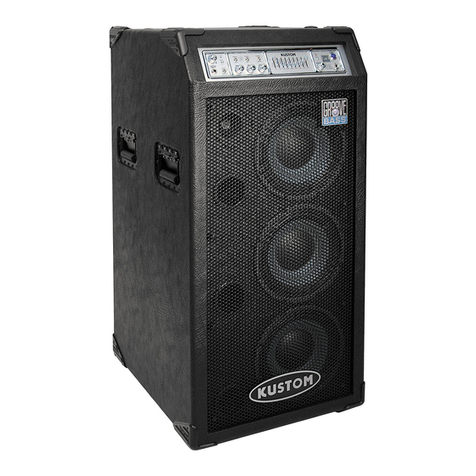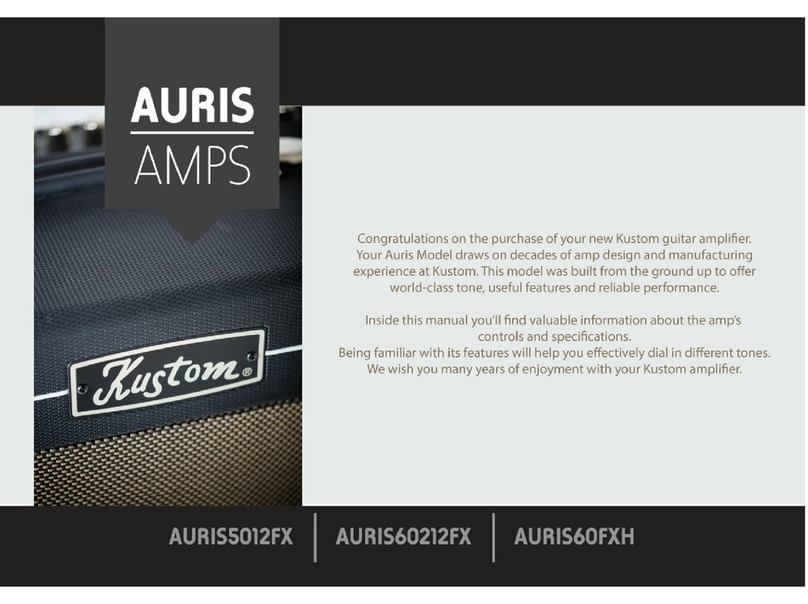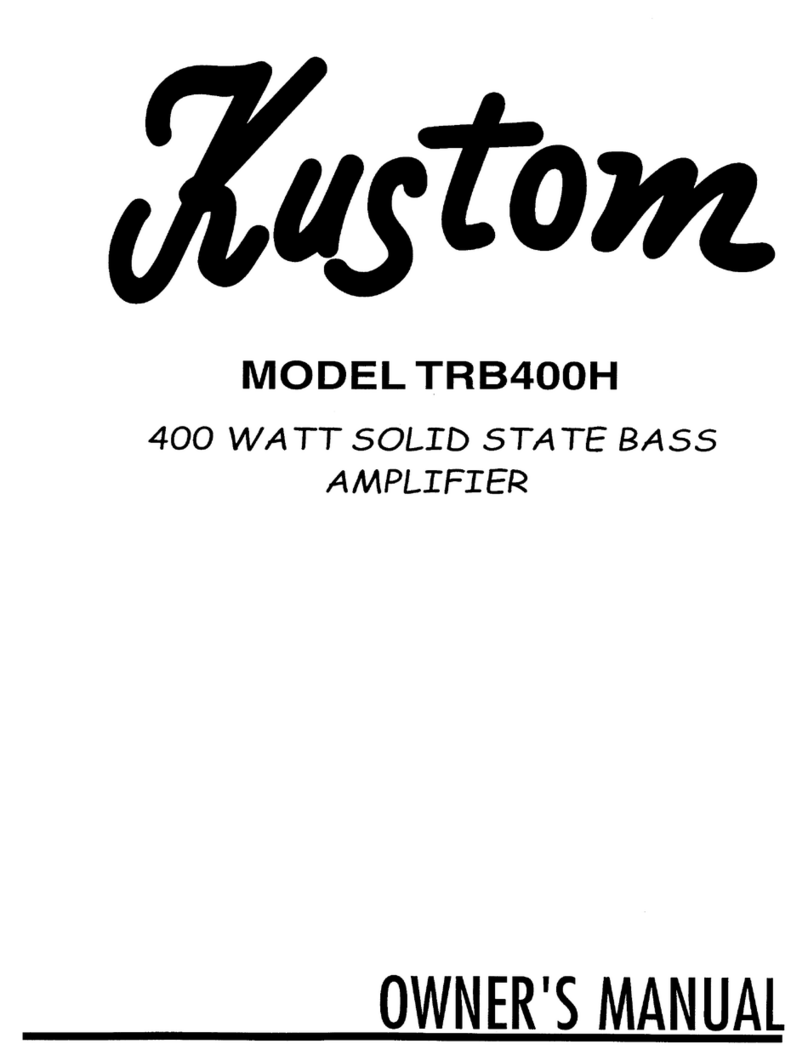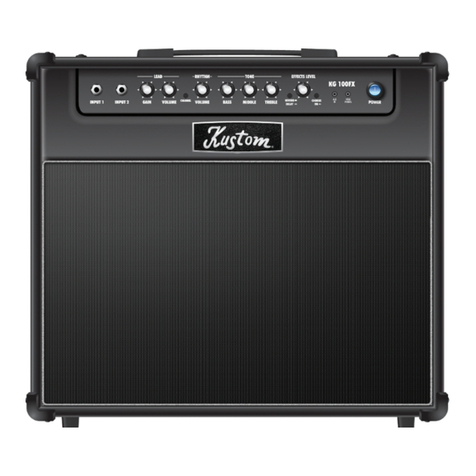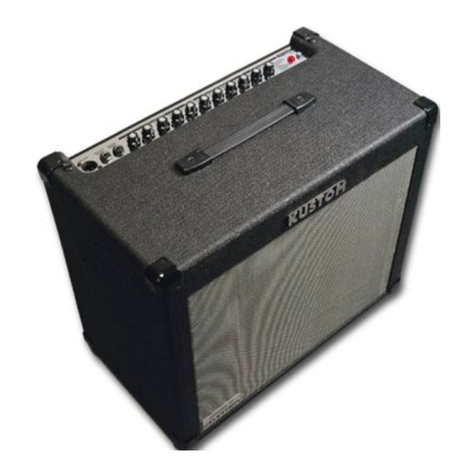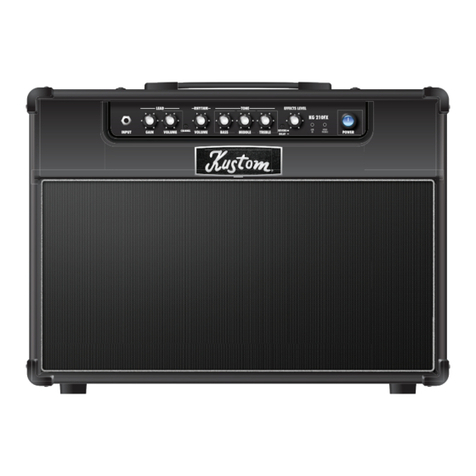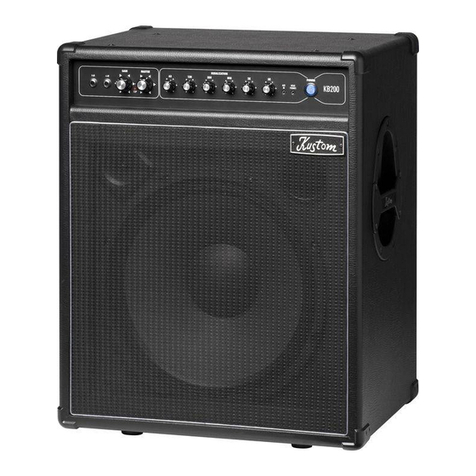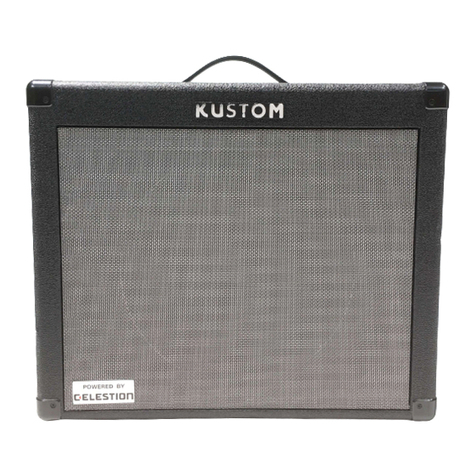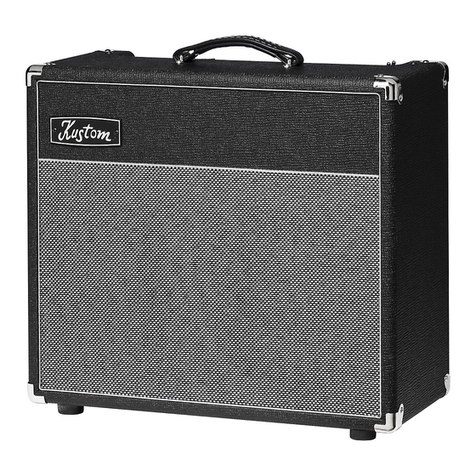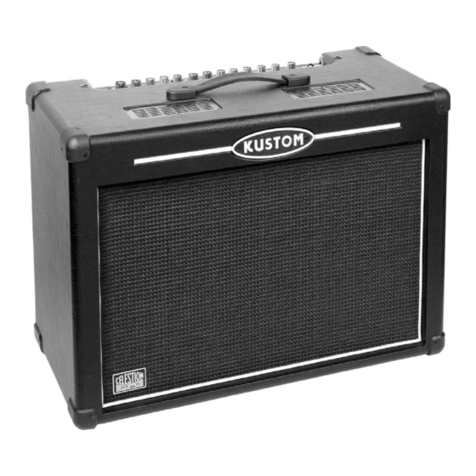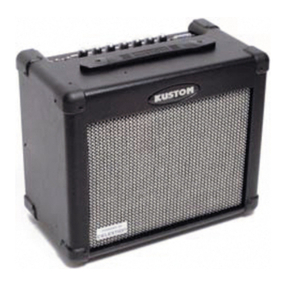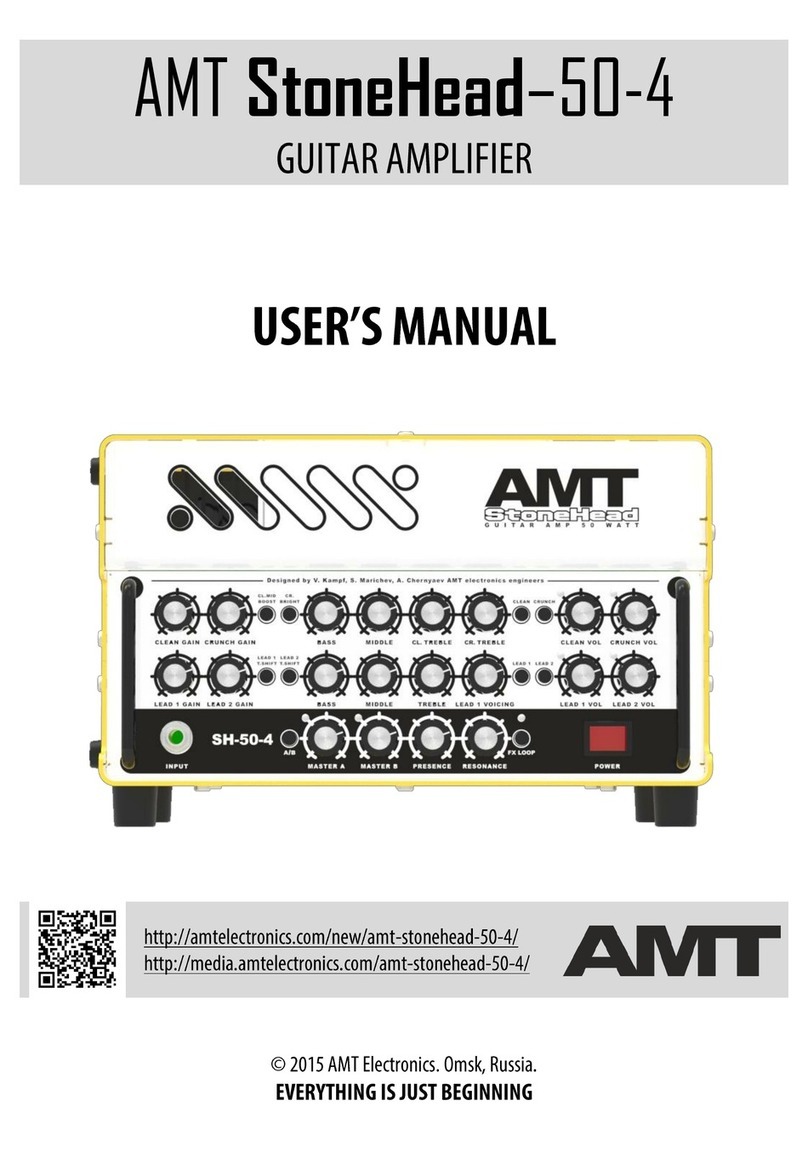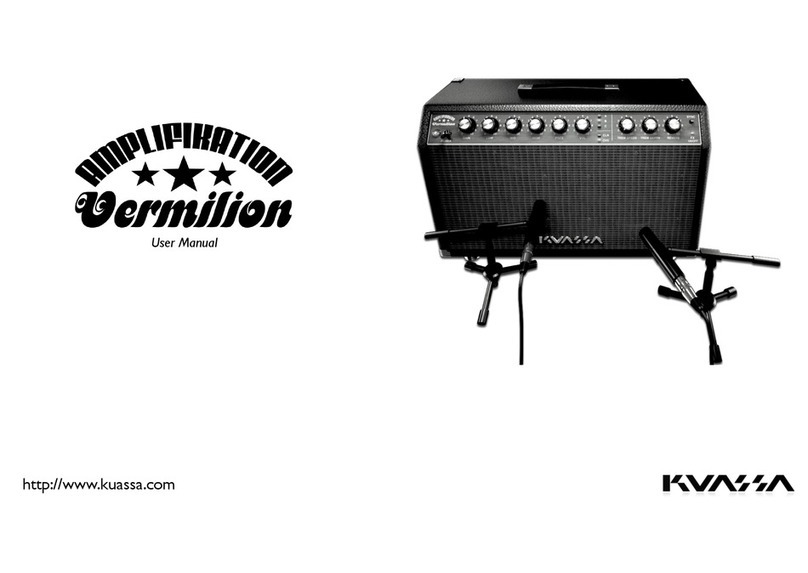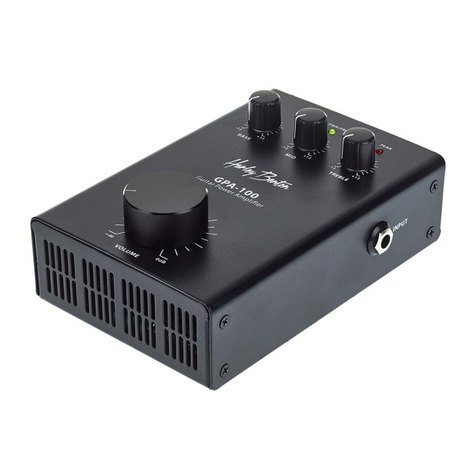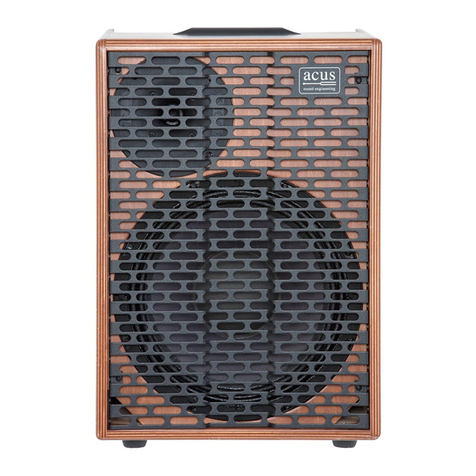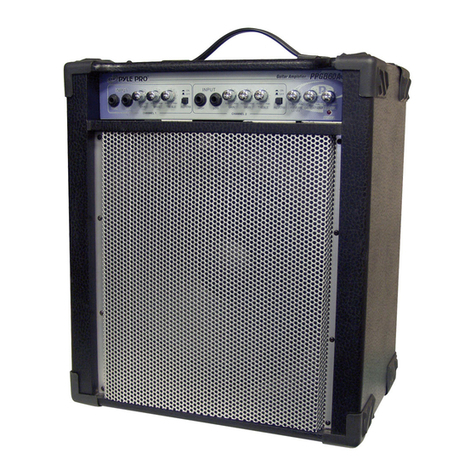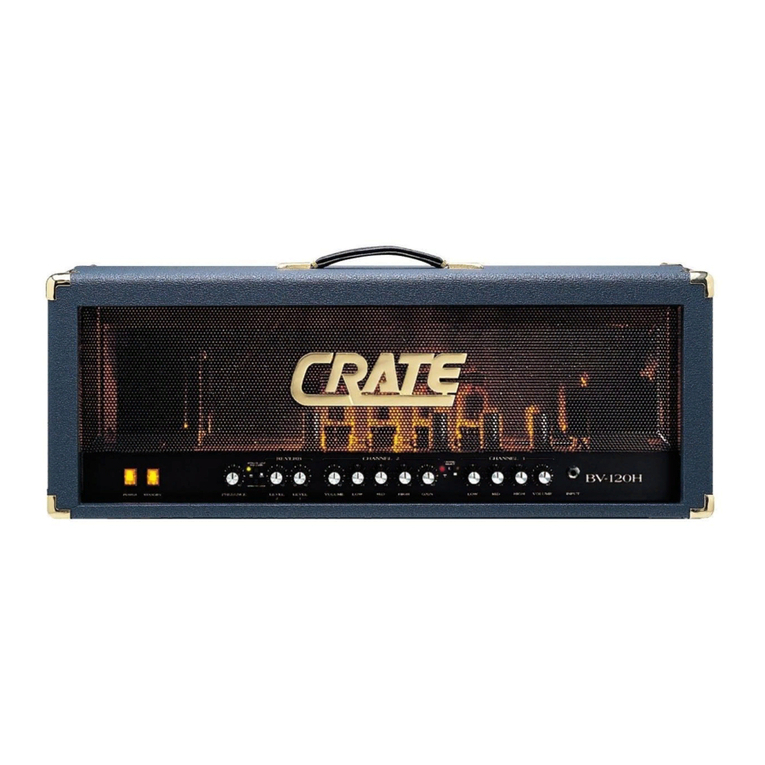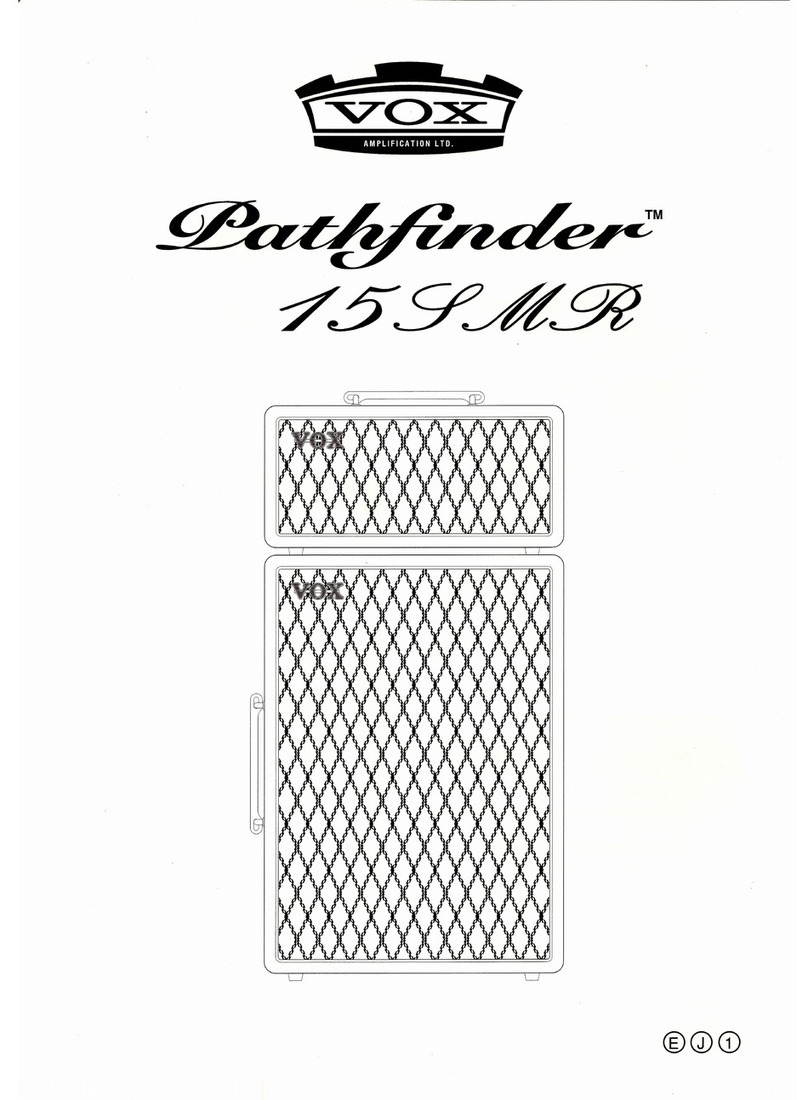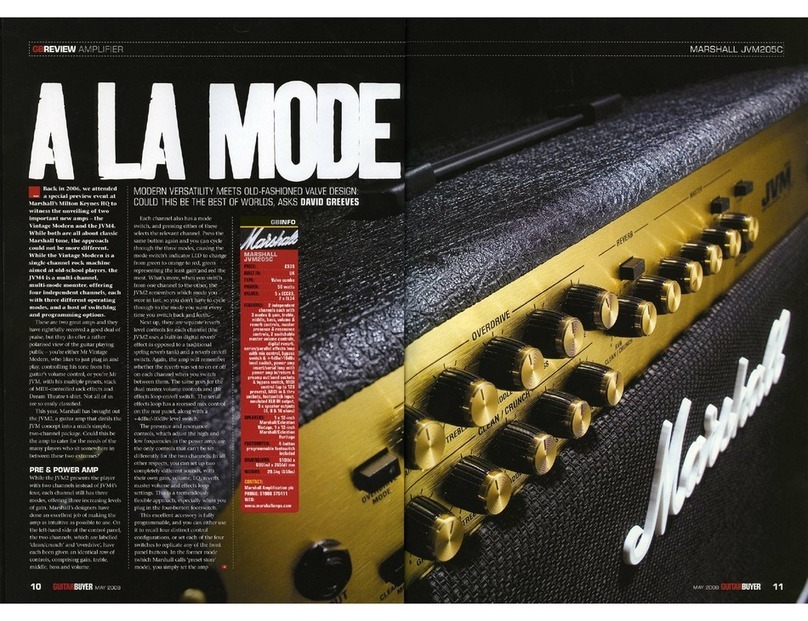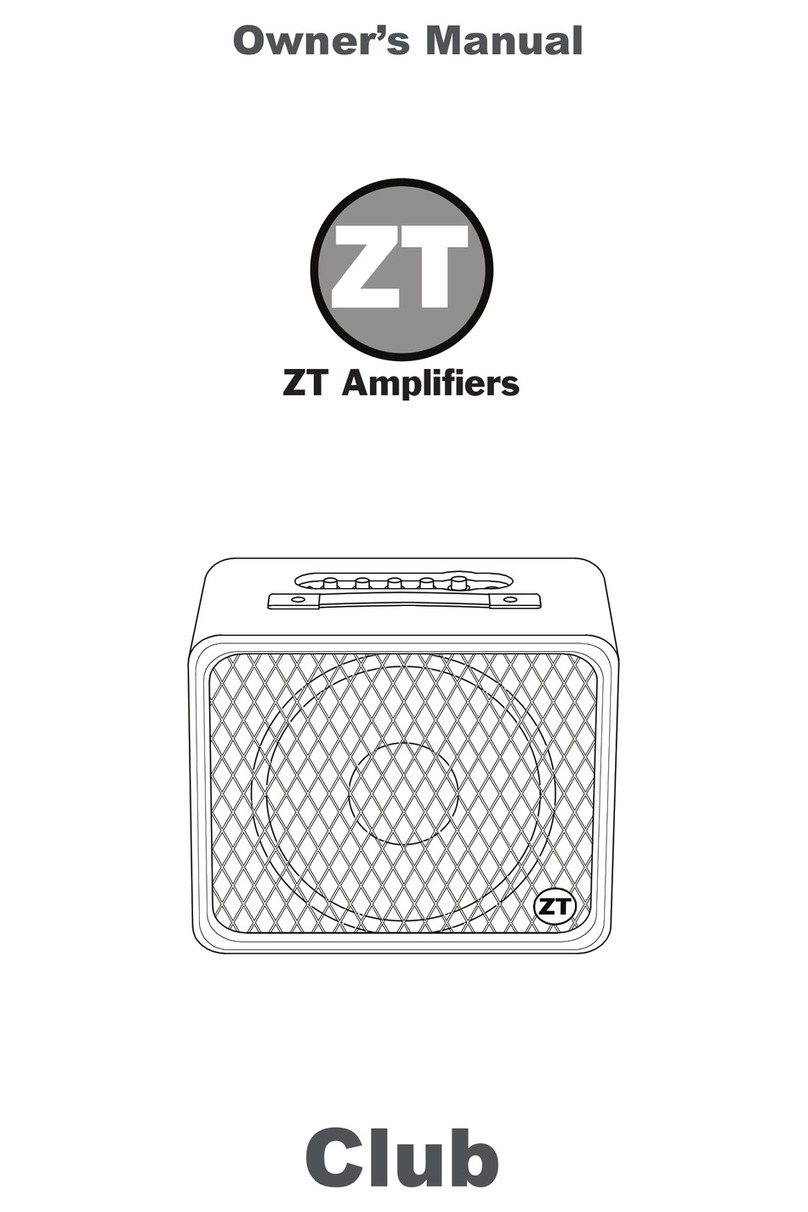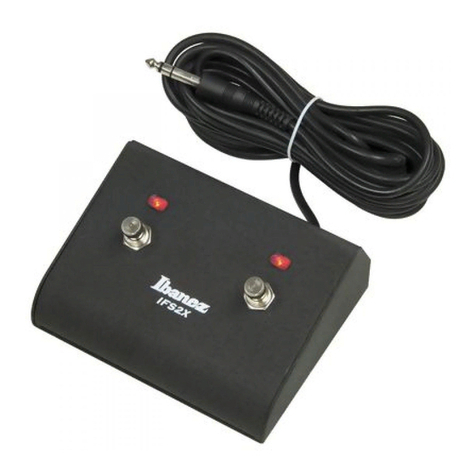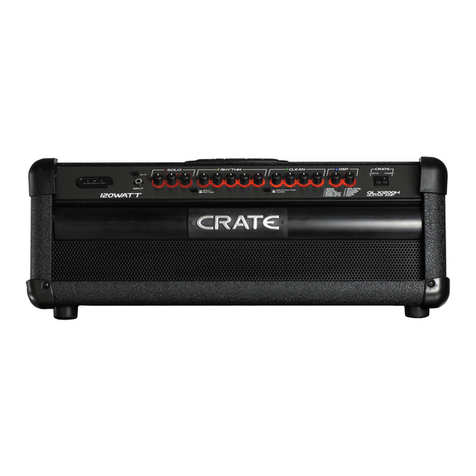
1 2 3 4
A BC
D E 5
6
7 8
1. AC POWER CORD RECEPTACLE: Insert the AC cord (provided) rmly into the AC connector. NOTE: Replace the AC power cord if
protective jacket is damaged or ground pin is damaged or removed. The fuse is located in a housing just below the receptacle. Replace
only with same type and size. To remove the fuse, remove AC power cord and pull out on the tab above the fuse symbol located on the
fuse carriage. Place the new fuse in the carriage clip and re-insert.
NOTE: To prevent an electrical hazard, DO NOT replace fuse without using the fuse carriage. Replace the fuse carriage if lost
or damaged before re-inserting the AC power cord.
3. FOOTSWITCH: The Footswitch jack on the V30 is a mono jack that connects to a footswitch to the amplier. The footswitch switches
the Boost on and off.
2. FUSE: The fuse is located in a fuse tray just below the receptacle. Replace only with the same type and size. For your convenience,
a spare fuse is located inside the fuse tray toward the front. To replace fuse, remove AC power cord.
Remove fuse tray by pulling the tab located above the fuse symbol away from the receptacle.
5: SPEAKER OUTPUTS: These 1/4” jacks are provided to connect the internal and/or external speakers to the V30.
THE AMPLIFIER SHOULD NEVER BE OPERATED WITHOUT A SPEAKER PLUGGED INTO A SPEAKER JACK.
6: IMPEDANCE SELECTOR: This switch is used to select the appropriate impedance, and is important in achieving the desired results
from the V30. The correct impedance should be selected using the Impedance Selector Switch as follows:
A. Internal Speaker Only: 16 Ohm Setting
B. Internal Speaker + External 16 Ohm Speaker: 8 Ohm Setting
C. Internal Speaker + External 8 Ohm Speaker: 4 Ohm Setting. (This conguration results in a mismatched impedance)
7. DIRECT OUT: The XLR Direct Out jack is designed to connect the V30 amplier to a recording or live mixer. The output is speaker-
emulated, and mimics the sound of the Celestion Vintage loudspeaker. This output is very useful for direct recording, and especially
helpful for live applications since it eliminates a live microphone on stage and the resulting feedback potential. The V30 amplier should
never be operated without a speaker plugged into a speaker jack.
8. GROUND LIFT: The Ground Lift switch disconnects pin 1 of the XLR Direct Out jack to eliminate a “ground loop” hum. A ground loop
can exist when the V30 and the mixer it is plugged into are connected to grounded outlets that are in physically different locations and/
or on different circuits, and should only be used if there is an audible hum. Pressing the ground lift does not disconnect the ground
connection from the V30’s chassis.
4. TUBE CONFIGURATION DIAGRAM
A. Bias Switch: The V30 ships from the factory with classic EL34 output tubes. However, if you want to try 6L6’s, this amp has the
capability. Underneath the tube cage is a switch that may be used to change the bias to accommodate either EL34 or 6L6 power tubes.
(Note: This switch is not a user serviceable item. Be sure to take it to a qualied service tech to make these changes.)
B. EL34 Output Tubes: These power tubes were selected to provide the best combination of performance and tube life, and shouldn’t
require adjustment to their bias. The amp uses a mixed-bias system, which is a combination of xed and self-bias techniques to give
the user the best of both worlds. The result is that the amp will control its own bias to a certain extent, but without the typical reduction
in power associated with normal self-biased designs. The V30 uses two EL34s in a “push-pull” amplier conguration.
C. Phase Inverter Tube: This 12AX7 is used in boosting the gain and driving the EQ. It has the biggest impact on higher gain sounds.
D. Preamp Tube 2: This 12AX7 is used in boosting the gain and driving the EQ. It has the biggest impact on higher gain sounds.
E. Preamp Tube 1: Half of this 12AX7 is the input tube, and as such, is the most likely to cause microphonic problems. If tube feedback
occurs, it can usually be corrected by swapping this rst tube with one of the other tube locations, since they have less gain following
them and are less prone to feedback. The rst tube also has the greatest effect on the clean tone of the amp. The other half of this tube
is responsible for providing the extra gain needed for the Boost control.
